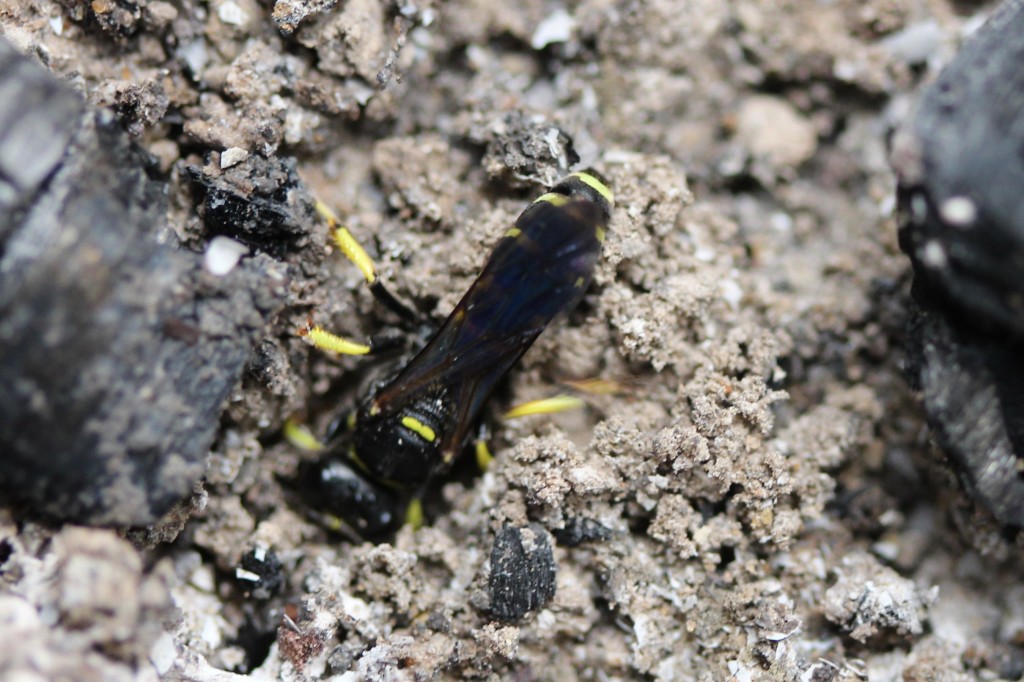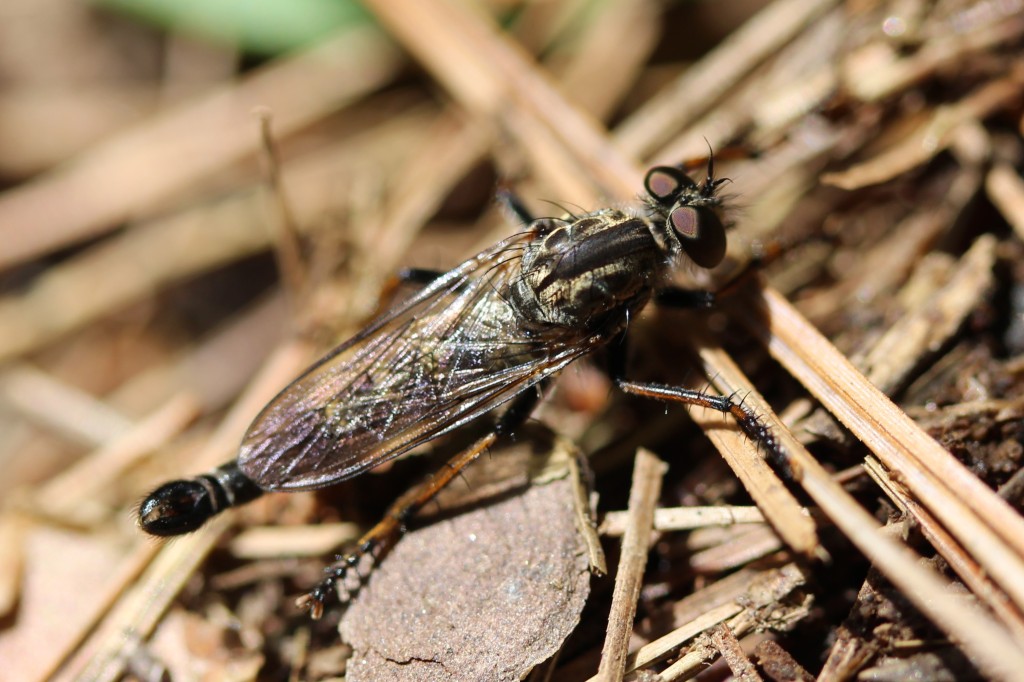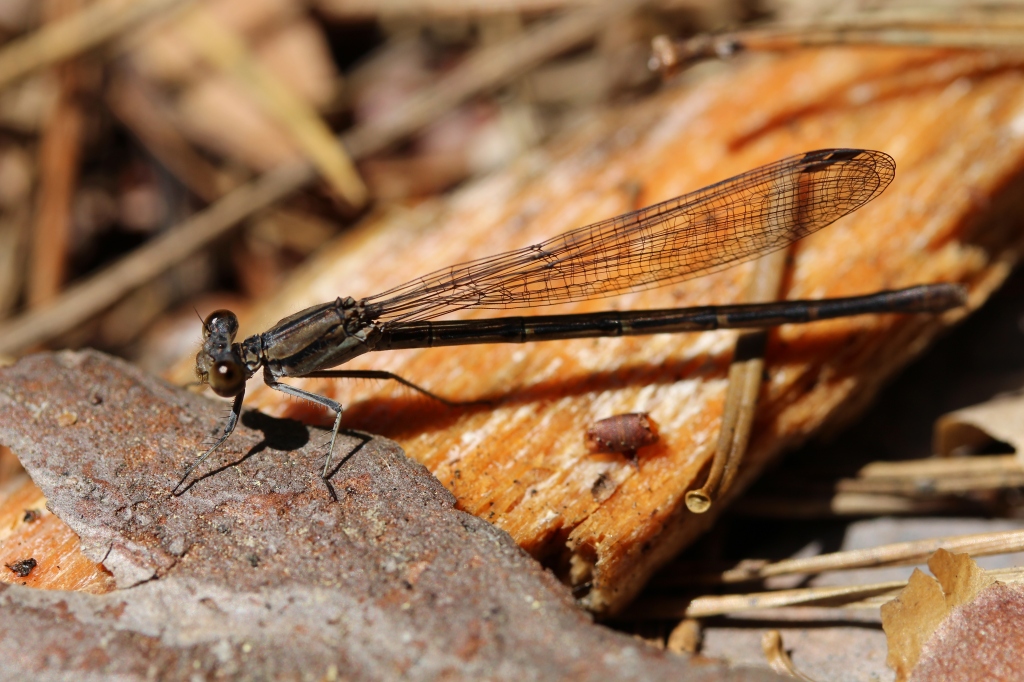In August of 2023, I returned to one of my favourite places: Algonquin Provincial Park. While there, I photographed and encountered varied organisms and I’d like to take the opportunity to explore and describe these nature observations in a series of blogposts, as I often do.
When first arriving at our campsite, I observed not a living thing itself, but rather the mark of a living thing on its environment: I found a bird nest. According to iNaturalist it is likely the creation of a Vireo (genus Vireo, who said Scientific names were hard to remember?). The most common Vireo in Southern Ontario is the Red-eyed Vireo (Vireo olivaceus), so this was likely constructed by a member of this species. A description of their nest construction is appropriate here: “The female spends 4 to 5 days constructing a nest of bark strips, grasses, pine needles, wasp-nest paper, twigs, and plant fibers that hangs below the branch. She glues the materials (some of which are provided by the male) together and to the branch fork with spider-web adhesive, occasionally supplemented with spider egg cases and sticky plant fibers.” (Cornell Lab of Ornithology 2019). I love thinking of the time and effort that went into this small nest. Just think of the spiders’ webs and egg cases that went into this architecture.

While exploring our campsite, a very different organism was in the process of creating a nest, a crabronid wasp female. This tiny black-and-yellow wasp was investigating the ground of our campsite for a location to create a burrow. The wasp landed several times and dug a little bit into the sandy soil then hovered for a while, circling the area before dropping to the ground once more. At one point, it entered the firepit and dug rapidly into the ashes within, crafting itself a very easily constructed but frightfully unwise burrow. It put me in mind of the parable of the man building a house on sand, perhaps there is a Hymenopteran equivalent about “digging one’s burrow in ashes”. In any case, I don’t think the wasp was settled on the firepit as its burrow location because after forming these temporary exploratory burrows, she flew off and wasn’t seen the rest of the day.


A few days later, I spotted her hovering form once more, this time accompanied by a prey item. Dragging below her was a corpse larger than herself, that of a Horse Fly (Tabanidae). I never witnessed the end of her journey, I’m not sure if she found a good spot to bury her large prey to feed her young. But I hope that she did.

Another Hymenopteran was looking to provision for its young, although its prey was far larger than a horsefly. The creature was a Black-and-red Horntail (Urocerus cressoni) and its prey was a tree. Horntails (Suborder Symphyta) lay their eggs inside the trunks of trees and the larvae feed within. Urocerus cressoni larvae feed inside of Pine trees and their relatives (Marshall 2023).

Many other insects were observed on the trees, plants and litter of our campsite and the surrounding areas of the Pog Lake Campground. Some True Flies (Order Diptera) caught my attention. A bright and shiny Dolichopus skittered about in the leaf litter, and an elongate Robber Fly (Genus Machimus) was spotted on fallen pine needles.


Some of the most beautiful insects found in the Pog Lake campground were the Dragonflies (Order Odonata). A strikingly large Dragonfly of the genus Aeshna was basking in the sun on the trunks of trees and (when I was able to take its photo) on our dining tent entrance.

A much more easily missed odonate was the Variable Darner (Argis fumipennis), a smoky grey presence among the pine needles and fallen bark.

Resting along a branch was a beautiful Autumn Meadowhawk (Sympetrum vicinum), in a colour phase that I hadn’t observed before. Males of this species are a bright red with a rusty-red thorax, but females (like the one I encountered) are yellowish. I was able to get very close to this dragonfly and was rewarded with some beautiful photographs.


We didn’t just hang out by our campsite in Pog Lake, but we spent quite a bit of time at the campground beach and that will be the focus of my next blogpost.
References:
Cornell Lab of Ornithology. 2019. All About Birds. Cornell Lab of Ornithology, Ithaca, New York. https://www.allaboutbirds.org/guide/Red-eyed_Vireo/lifehistory#nesting Accessed on [1/24/24].
Marshall, Stephen A. 2023. Hymenoptera
For Previous Algonquin Observation blogposts, see:
–Canada Jay (Perisoreus canadensis)
–Algonquin Observations, Part 5 – Spruce Bog: The Reckoning
–Algonquin Observations, Part 4 – Spruce Bog Speedrun and the Logging Museum Trail
–Algonquin Observations, Part 3 – Peck Lake Trail
3 replies on “Campsite Companions (Algonquin Observations August 2023, Part 1)”
[…] –Campsite Companions (Algonquin Observations August 2023, Part 1) […]
LikeLike
[…] –Campsite Companions (Algonquin Observations August 2023, Part 1) […]
LikeLike
[…] –Campsite Companions (Algonquin Observations August 2023, Part 1) […]
LikeLike